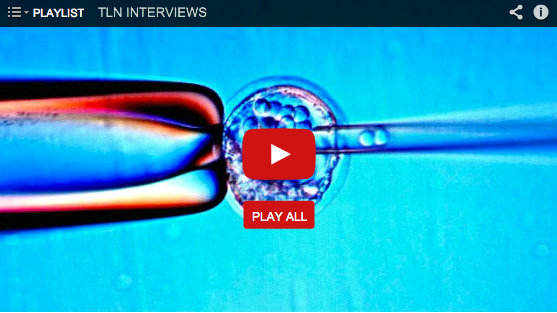What is osteoarthritis?
Osteoarthritis, also known as degenerative arthritis or degenerative joint disease, is a group of mechanical abnormalities involving degradation of joints, including articular cartilage and subchondral bone. Symptoms may include joint pain, tenderness, stiffness, locking, and sometimes an effusion. When bone surfaces become less well protected by cartilage, bone may be exposed and damaged. As a result of decreased movement secondary to pain, regional muscles may atrophy, and ligaments may become more lax.How can stem cells help fight arthritis?
Stem cell therapy has been demonstrated to induce profound healing activity in animals with various forms of arthritis. For example, the company Vet-Stem routinely utilizes stem cells in horses with various joint deformities to accelerate healing. Besides healing of damaged tissues, stem cells have the unique ability to modulate the immune system so as to shut off pathological responses while preserving ability to fight off disease.
Which kinds of stem cells are used and how are they obtained?
The stem cells we use are called allogeneic mesenchymal stem cells and they are considered to be adult stem cells, not fetal or embryonic. These cells are harvested from donated human umbilical cords after normal, healthy births. Each mother is tested for infectious diseases and has her medical history screened. Proper written consent is obtained from each family prior to donation.
Before they are cleared by the lab for use, all of the mesenchymal stem cells are screened for infectious diseases to International Blood Bank Standards.
Only one in ten umbilical cords make it past our rigorous screening process.
What are the advantages of allogeneic human umbilical cord tissue (HUCT)-derived mesenchymal stem cells?
- Anyone can receive them since HUCT mesenchymal stem cells are immune system privileged. Human Leukocyte Antigen (HLA) matching is not necessary.
- Allogeneic stem cells can be administered multiple times over the course of days in uniform dosages that contain high cell counts.
- Umbilical cord tissue provides an abundant supply of mesenchymal stem cells.
- No need to collect stem cells through invasive procedures such as liposuction or bone marrow collection
- There is a growing body of evidence showing that mesenchymal stem cells from umbilical cords are more robust than mesenchymal stem cells from other sources such as fat.
The body’s immune system is unable to recognize human umbilical cord tissue (HUCT)-derived mesenchmyal stem cells as foreign and therefore they are not rejected. HUCT stem cells have been administered thousands of times at the Stem Cell Institute and there has never been a single instance of rejection. Umbilical cord-derived mesenchymal stem cells also proliferate/differentiate more efficiently than “older” cells, such as those found in the fat and therefore, they are considered to be more “potent”.
Watch Professor Arnold Caplan from Case Western Reserve University explain how this works.
How are the stem cells administered?
The stem cells are administered by a licensed physician into the affected joint(s) (intra-articular injection) and intravenously (IV).
Osteoarthritis investigational treatment: clinical protocol example
Our investigative protocol for OA has been reviewed by the National Committee and has been conditionally approved. We expect non-conditional approval in the coming weeks.
- Approximately 5 days
- Medical evaluation and blood testing (day 1)
- Intra-articular (into the joint) injections of HUCT mesenchymal stem cells up to 4 joints (days 2-5)
- Intravenous injections (IV) of HUCT mesenchymal stem cells (3 injections during days 2-5)
- 1-month supply of Stem Kine supplement (only after medical evaluation in Panama)
What is the difference between a stem cell treatment for osteoarthritis and an investigational treatment under clinical protocol for osteoarthritis?
In Panama the term “stem cell treatment” is reserved for stem cell products that have been approved for use by the Panamanian Ministry of Health (PMH). Before PMH approval, use of these products are referred to as “investigational treatment under clinical protocol” to reflect the fact that they are not yet proven and still under investigation.
At present, we are conducting clinical research and administering investigational treatment under clinical protocols that are reviewed and approved by the National Committee for Bioethics in Research Institutional Review Board (IRB) approval. The IRB reviews all investigational clinical protocols and monitors stem cell research involving human subjects.
In the United States, stem cell treatments are regulated by the Food and Drug administration (FDA). In Europe, the European Medicines Agency holds jurisdiction over stem cell treatments.
Currently, no stem cell treatments for osteoarthritis have been proven safe and effective in the United States, European Union or Panama.
What about follow-up after I return home?
We care about how you are doing after you return home and we will monitor your progress on a regular basis. Regular follow-up also enables us to evaluate the safety and effectiveness or our investigational treatments.
Therefore, our medical staff will be contacting you after 1 month, 3 months, 6 months, and 1 year to follow up on your progress.
May I speak with someone who has completed an osteoarthritis investigational treatment?
Of course you may. Several people have volunteered to speak with you after you’ve been approved for investigational treatment. Your international coordinator will be happy assist you with contacting them at the appropriate time.
You may also take a look at written testimonials, news articles and videos about stem cell therapy for osteoarthritis.
How can I request more information?
You may contact us by telephone 1 (800) 980-STEM (toll-free in US) and 1 (954) 358-3382.
Apply today:
To apply, please complete this Application Form.


